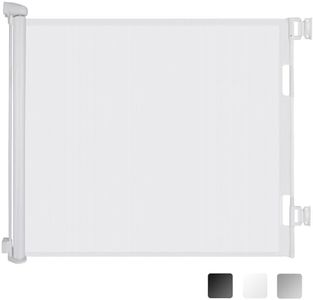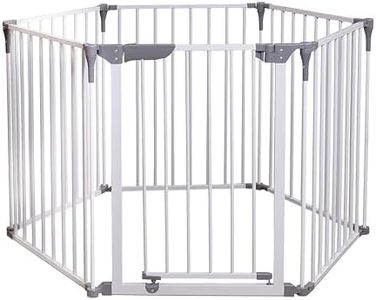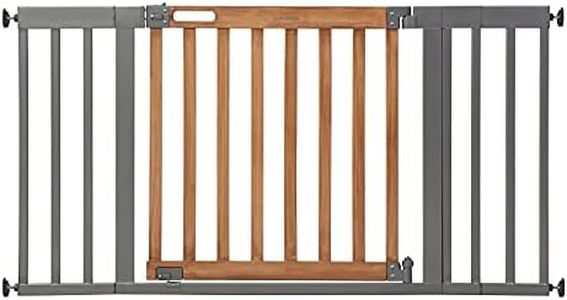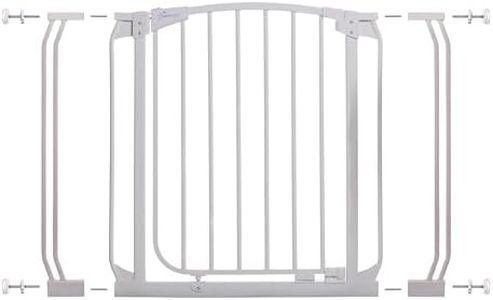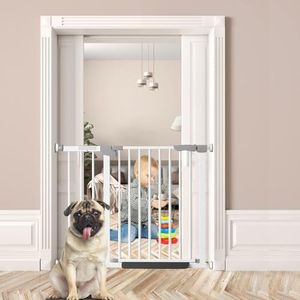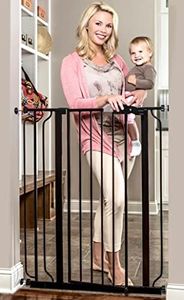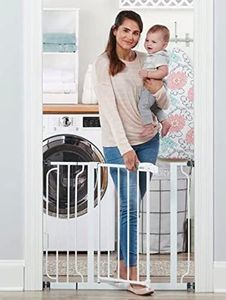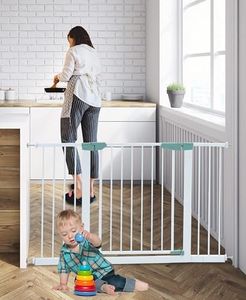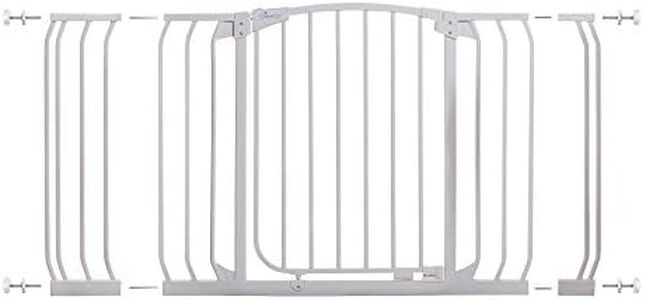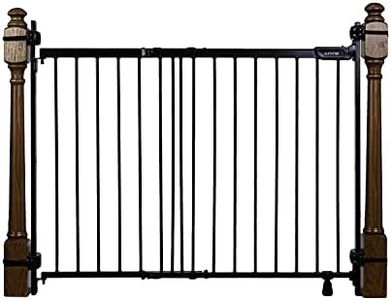We Use CookiesWe use cookies to enhance the security, performance,
functionality and for analytical and promotional activities. By continuing to browse this site you
are agreeing to our privacy policy
10 Best Baby Gate For Top Of Stairs
From leading brands and best sellers available on the web.Buying Guide for the Best Baby Gate For Top Of Stairs
Choosing the right baby gate for the top of stairs is important for keeping your child safe and giving you peace of mind. Not all baby gates are created equal—some are designed for use in doorways or around rooms, while others are specifically built for the unique safety needs of staircases. When picking a gate for the top of stairs, you should prioritize security, sturdiness, and easy operation for adults, while making sure it is truly child-proof. Here are the most important specifications and features to focus on when selecting a baby gate for stair use.Attachment MethodThe attachment method describes how the gate is secured to your walls or banisters. For stair tops, a hardware-mounted gate is essential, which means it screws directly into the wall, offering a fixed and sturdy installation. Unlike pressure-mounted gates that can shift and are better for doorways or flat surfaces, hardware-mounted gates don't move if pushed or pulled—crucial for safety at heights. Always pick a hardware-mounted gate for the top of stairs for secure placement, even if installation takes some effort.
Opening MechanismThe opening mechanism is how the gate opens and closes—think of this like the locking and swinging motion. For stairs, look for a gate that swings open like a door and has a secure, child-proof locking mechanism. Swing-only gates (that do not swing out over the stairs) add safety by ensuring the gate always opens away from the stairway, not over it, reducing tripping hazards. When choosing, consider how easy it is for you to operate with one hand while still being too complex for a small child.
Height of GateHeight refers to how tall the gate is from floor to top. Taller gates (usually 29-36 inches or more) prevent adventurous toddlers from climbing over, but are still manageable for parents to open easily. If your child is a particularly enthusiastic climber, or if you have pets that might jump the gate, opt for a taller model. For most families, a standard height provides the best mix of safety and ease of use.
Width and AdjustabilityThe width specification tells you the minimum and maximum space the gate can block. Stairs and hallways vary in size, so look for a gate with adjustable width, using extension kits when needed. Before buying, measure your stair opening—pick a gate that offers a snug fit so there are no gaps a child could squeeze through. Gates with generous width adjustments are versatile and future-proof for potential moves.
Material and Build QualityMaterial is what the gate is made of—commonly wood, metal, or durable plastic. For stair tops, strength and rigidity matter most. Metal gates are generally strongest and resist bending, while wooden gates can suit certain home décors but should still feel sturdy and well-made. Avoid flimsy materials for stair use. Always check the feel of the gate and ensure there are no sharp corners or pinch points.
Slat or Panel DesignThis refers to the pattern of bars or solid panels in the gate. The space between bars should be too small for a child's head or limbs to get stuck. Look for gates with vertical slats and no footholds for climbing, or for solid panels with no horizontal ridges. Consider slat spacing when you want to minimize risks of entrapment or climbing.
